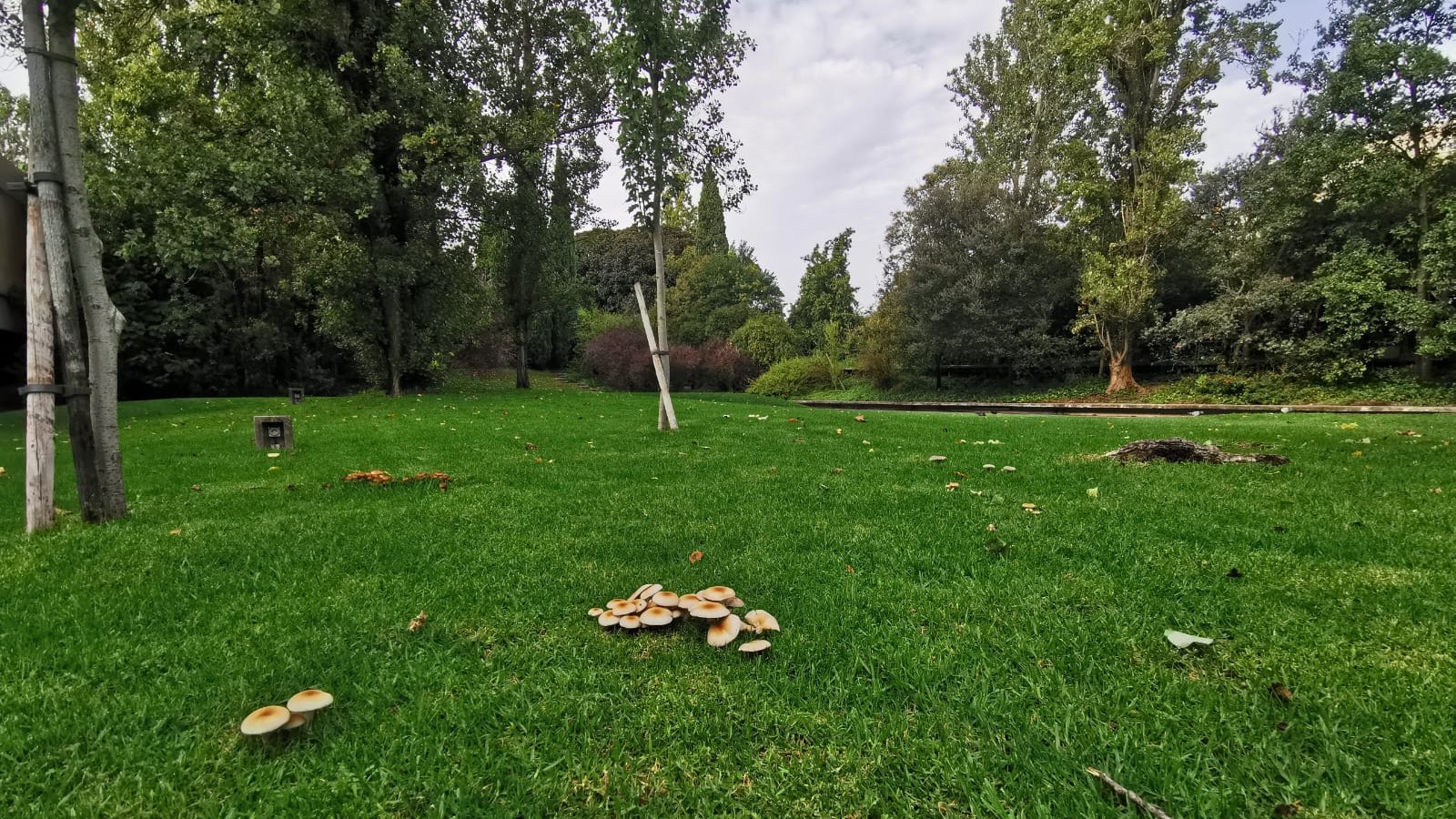How to promote a diversity of mushrooms (and other fungi) in your green space
Gardens for wildlife
It is estimated that there are around 3000 different species of macrofungi (the fungi that produce mushrooms) in Portugal, although the exact number is still uncertain. Susana Gonçalves, researcher at the Functional Ecology Centre and MyCoLAB at the University of Coimbra and a biologist dedicated to researching these little species and reminds us that, while they are often seen as ‘the poor relation’ of life on Earth, they actually play a very important role as the principal decomposers in nature, recycling trees and other vegetable matter, and establishing partnerships of mutual benefit with 80 to 90% of the world’s plants. ‘Without fungi, life on the planet wouldn’t exist as we know it’, stresses the researcher, who on 23 October gave a guided tour of the Gulbenkian Gardens: ‘Gardens, mushrooms and the fantastic fungi kingdom’.
But what actually are fungi? Susana Gonçalves explains that fungi are eukaryotes, which means that, just like animals and plants, they have cells with a nucleus. On the other hand, they need carbon to survive, which they get ‘through absorption, by producing enzymes that break down the matter around them, which they then absorb.’
The vast majority of fungi are filamentous, which means they have very fine filaments called hypha, which in turn form groups which are called mycelium. By way of comparison, Susana explains that the mycelium is like our entire head of hair, while each of the single hairs is a hypha.
Unlike our hair, however, the mycelium is usually well hidden, often underground. It is only the mushrooms that erupt from the ground or trees, mostly in autumn, that signal the fungi below, allowing us ‘to observe the invisible heroes of the garden for a few days a year.’ But what exactly are mushrooms? According to the researcher, they are ‘reproductive structures that some fungi produce like apple trees produce apples.’
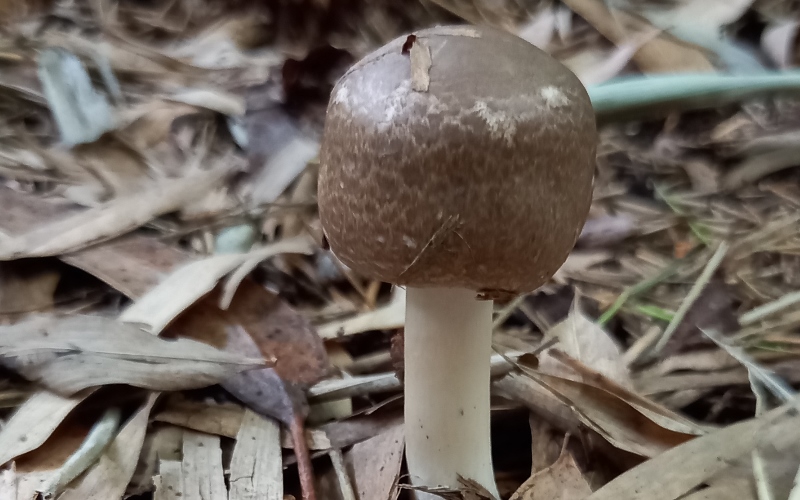
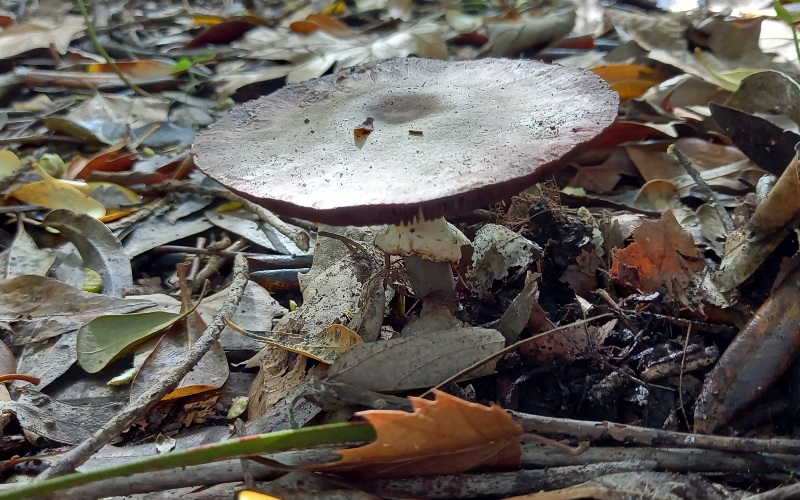
What we can do
Susana Gonçalves highlights several measures we can take to promote the conservation and diversity of species of this group when caring for a green space:
The rubbish brigade and tree allies
Not all fungi live in the same way. Among the three main types of filamentous fungi are the saprophytes, which are like ‘nature’s rubbish brigade.’ ‘A log that falls to the ground disappears after fungi have done their job’, clarifies the University of Coimbra researcher, who stresses that fungi ‘are the only things capable of breaking down the complex polymers that make up wood.’ In the Gulbenkian Garden, for example, we can see poplar mushrooms (Cyclocybe aegerita), which feed on the dead parts of the roots of the poplars on a nearby lawn. Within the same group, in this green space we can also find mushrooms of the genus Ganoderma and the curious basket stinkhorn (Clathrus ruber).
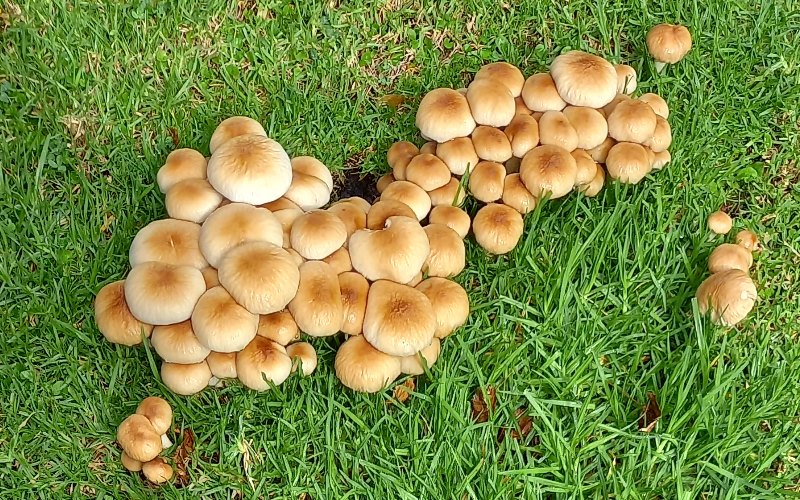
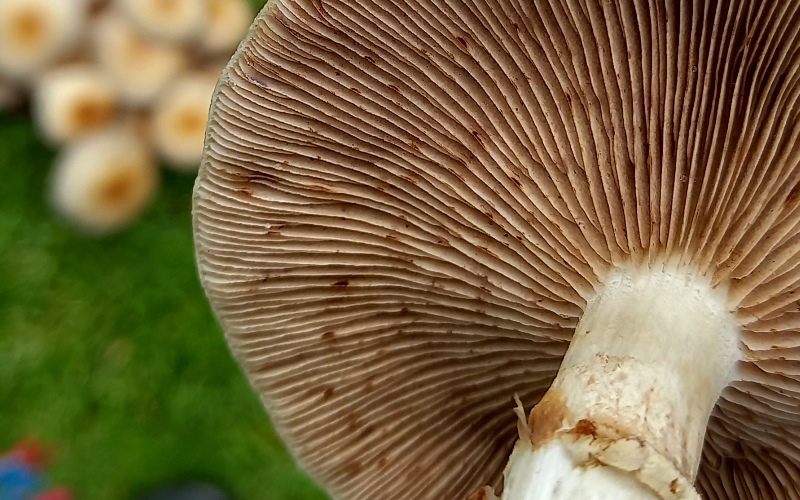
Mycorrhizal fungi live in association with plant roots, in a partnership in which the latter synthesise and supply carbon to the former, which in turn explore the soil and provide mineral elements. ‘Many of the plants in Portugal are dependent on mycorrhizal fungi’, says Susana, who distinguishes between various types of relationships, which differ according to the type of fungus and plant involved.
Among these, one of the most fascinating relationships are those of the ectomycorrhizae, discovered in the late 1880s. In these cases, ‘the tips of the roots seem to have put on a sock of fungus’, jokes Susana, who explains that there are ‘lots of fungi invested in this type of relationship.’ Ectomycorrhizae often produce highly appreciated wild mushrooms, such as porcini or chanterelles, in association with tree species such as oaks, pines, firs, birches and chestnuts.
Finally, parasitic fungi, unlike mycorrhizal fungi, are the only ones that benefit from the relationships they establish. ‘They can be parasites on trees, insects or even on other fungi’, says the researcher, who clarifies that the death of the host is often not immediate. ‘In a balanced system, a parasitic fungus and a tree can co-exist for many decades. Only when the tree becomes weakened does it eventually die’.
In fact, the researcher stresses, some parasites are very important because they feed on the central part of the tree, where there is no sap. ‘We must remember that a tree can live infected by a parasitic fungus for decades before it shows symptoms of disease and succumbs. That same fungus can contribute to the creation of cavities, which in turn are important for insects, birds and small mammals.’
The relationship between fungi and other species in a garden doesn’t stop there. Many mushrooms serve as homes for different invertebrates, and many squirrels and slugs like to eat them, as do many humans.
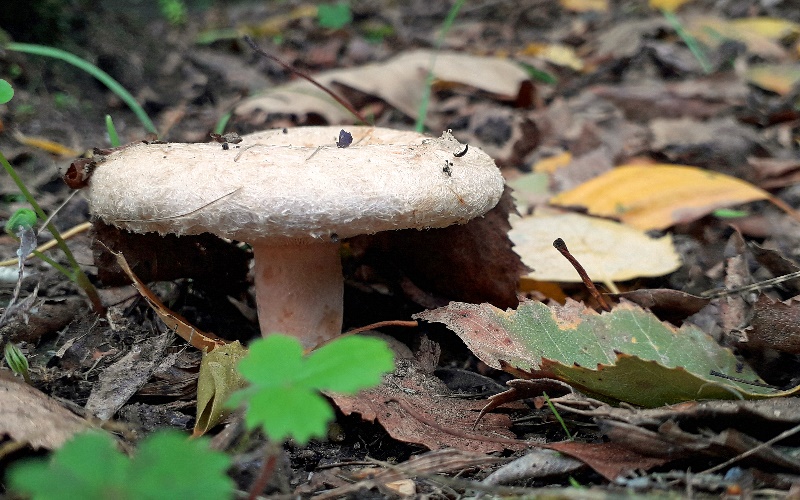
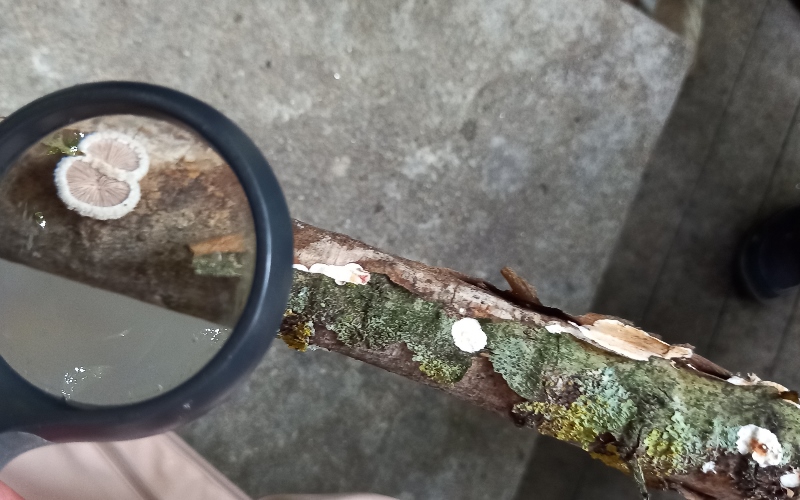
If you are going to pick mushrooms
As to picking fungi as a source of food, Susana has some general advice:
And lastly, always be absolutely sure of the species you’ve picked, because eating the wrong mushroom can lead to death, a tragedy which has occurred to entire families. ‘If in doubt, don’t eat it!’ is the key message.
Gardens for wildlife
Throughout the year, the Gulbenkian Garden is promoting a series of visits focused on how to make our gardens, parks and land, both inside and outside cities, more welcoming for wildlife – fundamental for life on Earth! Wilder magazine follows these visits and publishes articles on each of the different topis covered in partnership with the Gulbenkian Foundation.
